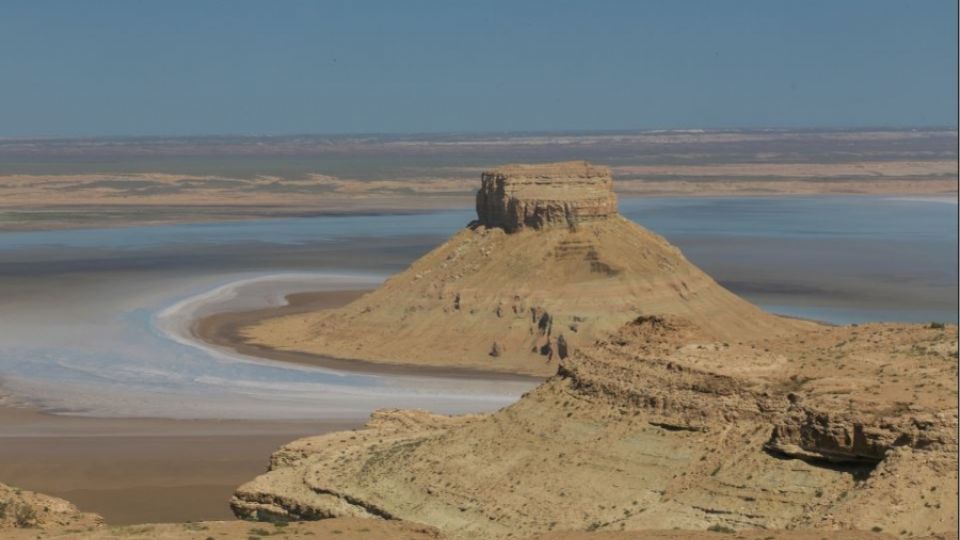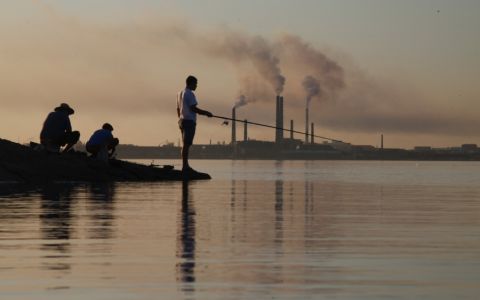An unequal exchange: UNESCO World Heritage site in the gas field?
A new site from Kazakhstan could be soon included in the internationally renowned UNESCO World Heritage List. Experts are discussing the nomination of a protected areas system on the territory of the Ustyurt Plateau, including the State Nature Reserve Ustyurt, Regional Natural Park Kyzyl-Sai, Reserves Zhabayushkan, Manashi and Eset Kolenkily as well as a number of territories which don´t have the status of protected area: a unique tract Zhygylgan in Tupkaragan area, the valley of stone balls in the Mangystau Region and the chink Kaplankyr on the border with Turkmenistan and Uzbekistan. However, a plan to develop a gas field in the vicinity of the Ustyurt Nature Reserve border became a major obstacle to the nomination of the territory to the UNESCO World Heritage List.
Ustyurt is a cross-border plateau located on the Aral-Caspian watershed on the territory of Kazakhstan, Uzbekistan and Turkmenistan. According to experts, the Ustyurt Plateau, with its magnificent cliffs, escarpment, scenic canyons and outlying mountains, presents a unique landscape and has an exceptionally rich biological diversity. Many animals that live here are listed in the Red Book of Kazakhstan and of the International Union for Conservation of Nature (IUCN).
For centuries, the Ustyurt Plateau has been a crossroads of civilizations and has preserved traces of many cultures. Medieval cemeteries including the majestic mausoleums - mazars - are scattered across the plateau.
Many other ancient archaeological sites can be found on the Ustyurt Plateau, including some from the Neolithic age and the so-called Arana, a complex configuration of hundred metres of stone fences which served for mass battue hunting of hoofed herd such as kulans, saiga antelopes and gazelles. Moreover, many Islamic holy places are present on the Ustyurt Plateau. The most famous of them, the underground mosque Beket-Ata is visited by thousands of pilgrims every year.
If you want to support the nomination of the Ustyurt Nature Reserve to the UNESCO’s World Heritage List, sign the petition: http://ecocitizens.kz/petition
Where nature and history meet
Ustyurt Nature Reserve has been established in 1984 to preserve the unique natural complex, the historical monuments and the desert flora and fauna of the Mangystau Region. The size of the protected area is 223,342 hectares. However, when creating the reserve the suggestions of experts were not fully taken into account resulting in insufficient representation of the desert biocenoses that are included only in fragments. The Ustyurt chink became the only fully represented area. These short comes should be eliminated in the near future by implementing the governmental project: "Improving sustainability of the system of protected areas in desert ecosystems through the promotion of compatible biodiversity-livelihoods in and around protected areas".
In accordance with the objectives of the project, the protected area should be extended to 927,350 hectares and has to cover all the major ecosystems that are typical of the Mangystau Region. The extended area will preserve the key habitats of specially protected species such as saker falcons, bustards, mogilnik eagles, steppe eagles, vultures, black vultures, lesser kestrels, urials and gazelles.
The uniqueness of the Ustyurt Nature Reserve and of several other specially protected natural territories of Mangystau region has been confirmed by a group of experts from Kazakhstan, Russia and Germany. In 2013 the group started to work on the nomination of the above mentioned territories in order to reach the World Natural Heritage Status awarded by UNESCO.
However, a major obstacle to the expansion of the reserve and its successful nomination was represented by the plan of state-owned company KazMunayGas to develop the Khansu gas field, located in the immediate vicinity of the southern border of the currently existing Ustyurt Nature Reserve. According to the experts, the development of the gas field would have catastrophic impact on the ecosystem, on the expansion of the reserve and on its nomination to UNESCO. The disturbance factor and inevitable growth of poaching as a result of infrastructure development will lead to the disappearing of all the large animals and birds from the southern part of the reserve, including those listed in the Red Book of the Republic of Kazakhstan and of the International Union for Conservation of Nature.
Disastrous plans
The deputy director of the Usyturt Nature Reserve, Zhaskayrat Nurmkhambetow, confirmes the fears of experts. According to him, the first negative effects on the neighbourhood of the Ustyurt Nature Reserve appeared in the spring 2015, when the seismic survey was carried out in the Khansu gas field. The use of the large machinery for seismic survey damaged vegetation and soil cover of the Kenderli territory and Kayasanskoy protected zone, adjacent to the Ustyurt Nature Reserve. The impact of powerful anxiety factors associated with work on the gas field reduced the number of gazelles and damaged their habitat. Zhaskayrat Nurmukhambetov also stressed out that in the case of development of the Kansu gas field the consequences for the ecosystems and species listed in the Red Book of the Republic of Kazakhstan would be the most negative possible.
Currently in Kazakhstan there is only one natural world heritage site, the Saryarka - Steppe and Lakes of Northern Kazakhstan. The site comprises the Naurzum State Nature Reserve and Korgalzhyn State Nature Reserve with a total area of 450,344 hectares.
Realizing the importance and the need to develop oil, gas and hydrocarbon production for the economic development and social sphere, the experts consider necessary to impose a moratorium on the exploration and development of Khansu gas field and focus on exploration and development of Samtyr gas field located at a much greater distance from the Ustyurt Nature Reserve. The development of this field will help to solve many social and economic problems of the region and at the same time, with strict observance of the norms of environmental legislation, will not have catastrophic consequences for the ecosystem of Ustyurt.The development of the Samtyr gas field might not be the only acceptable alternative. There are other similar fields on the territory of the Karakiya District.













